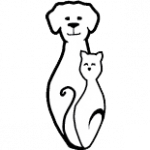Illustrated Articles
-
Miscarriage refers to the death of a fetus during pregnancy, with the most common cause being infection. It may also be caused by hormonal shifts or abnormalities. In many cases, there are no visible signs of miscarriage. If miscarriage is suspected, ultrasound is used to assess the pregnancy and determine whether the fetuses are alive. Finding a cause for the miscarriage, especially if that cause is a treatable condition, may improve outcomes in future pregnancies.
-
Misoprostol (brand names Cytotec®, Arthrotec®) is a prostaglandin E1 analog drug. It is used off label (extra label) to treat or prevent stomach ulcers due to NSAID use in cats, dogs, and horses. It can also be used in combination with other medications to treat uterine infections, protect the kidneys, treat skin allergies, or to terminate pregnancy.
-
Mole and gopher baits are often flavored to attract pests, but cats and dogs may also ingest them if given the chance. The active ingredients in these baits can cause significant illness if enough is ingested. The most common active ingredients used in mole and gopher baits are zinc phosphide and bromethalin. There is no antidote for bromethalin poisoning, so decontamination within an appropriate time is key to a good outcome.
-
Molidustat (brand name Varenzin-CAI) is a medication used to treat anemia (low red blood cell number) in cats with chronic kidney disease. Molidustat helps increase red blood cell production. It is conditionally approved for use in cats only. It comes in liquid suspension form.
-
Mometasone furoate + gentamicin sulfate + clotrimazole topical ointment is a combination topical ear medication used to treat bacterial and/or yeast ear infections in dogs. It comes as a liquid suspension and is applied topically to the affected ear once daily.
-
Mometasone combinations are applied topically to the skin and are used on and off label to treat skin lesions. The most common side effect is inflammation at the application site. It should not be used on pets that are allergic to it, are pregnant, have tuberculosis of the skin, or in pets with a ruptured ear drum. If a negative reaction occurs, please call your veterinary office.
-
Pets that have been diagnosed with epilepsy are usually prescribed one or more medications to prevent convulsions or seizures. Careful monitoring of epileptic pets is necessary, not only to make sure the dose of the medicine is right, but also to ensure there are no problems related to the long-term use of the medication. The most important thing to do is follow your veterinarian's instructions closely and give the medication regularly and consistently. This will ensure that the value reported on the blood test is reliable.
-
Mothballs are solid pesticides that slowly release a vapor to kill and repel moths, their larvae, and other insects from stored clothing and fabric. Mothballs are sometimes also used to repel snakes, mice, and other animals, although this use is not recommended and can be harmful to pets, children, and the environment.
-
Motion sickness in cats is a common problem. Many cats become anxious or nauseous during travel due to a lack of conditioning and the overwhelming unusual stimuli associated with moving inside a vehicle. Signs your cat may be experiencing motion sickness may include whining, meowing, or howling; drooling and excessive licking of the lips; pacing; vomiting or diarrhea; and lethargy or inactivity. Conditioning your cat to car travel can help ease some anxiety. However, if your cat seems to need more help to stay calm during travel, speak to your veterinarian about using anti-nausea medication, anti-anxiety medications, as well as natural calming agents such as pheromones.
-
Most cats settle into a new home fairly easily. They crave familiarity, so it is best to bring along many familiar objects, such as litter boxes and favored furniture. Cats must be initially secured to prevent their escape, as they may attempt to return to a prior home and could be lost or injured along the way. It is best to introduce your cat to your new home gradually and with supervision.

